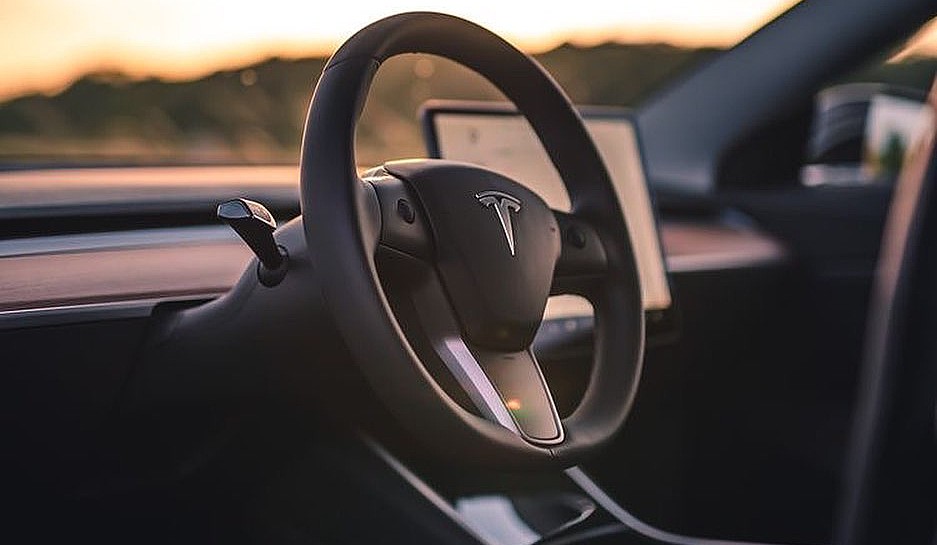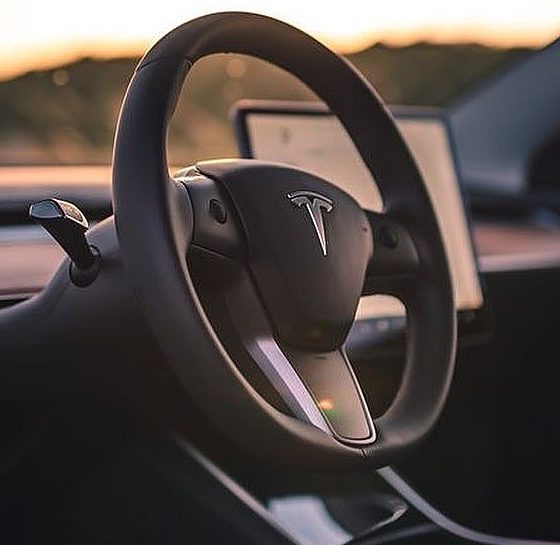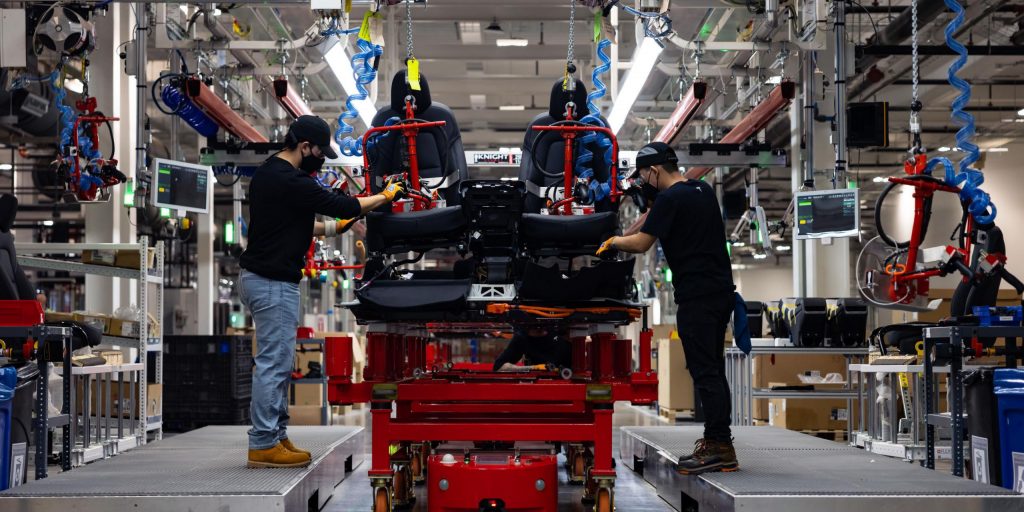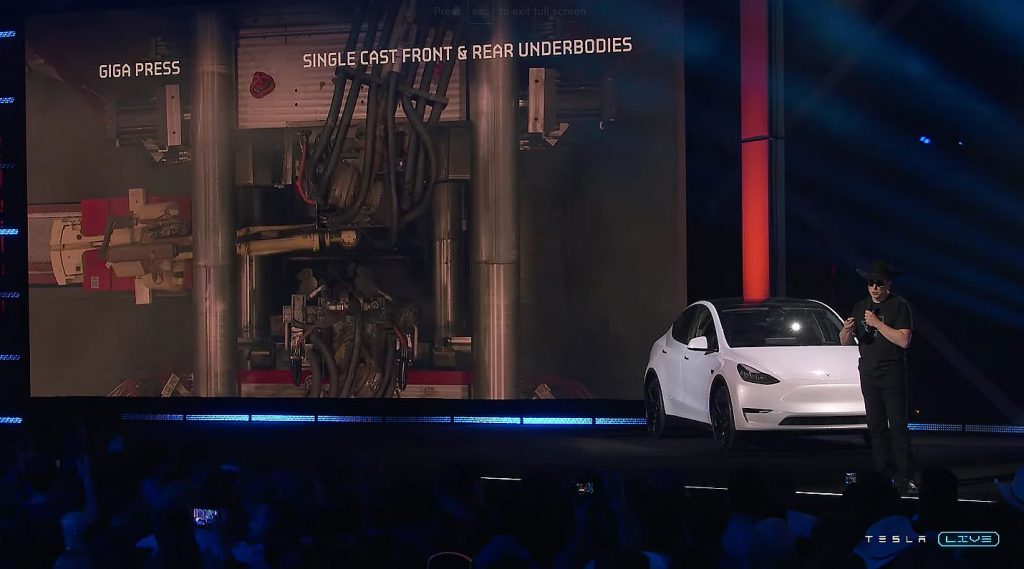

News
Tesla’s streamlining efforts are a secret weapon against rival automakers
Tesla’s rise over the years from an upstart electric sports car maker to the world’s most valuable automaker by market cap is remarkable. Tesla’s lead in the electric vehicle sector continues to grow technology-wise, and the company is also catching up to the world’s veteran carmakers when it comes to its business.
Tesla, for example, has accelerated the timeline for turning cash into product and back to cash, allowing the company to commit more of its resources for investments in its upcoming projects. Tesla’s net profit increased over sevenfold in the year ending in the January to March quarter to $3.3 billion. That’s not far behind Toyota, which posted $3.93 billion.
As noted in a Nikkei Asia report, Tesla’s cash conversion cycle fell to minus 15 days in fiscal 2021. This was the first time that Tesla entered the negative territory since starting the mass production of the Model S back in 2012. Automakers typically require a large amount of working capital on hand to operate. Nikkei noted that a negative cash cycle eliminates this need, as it allows the company to invest its money instead.

Tesla’s cash conversion cycle of minus 15 days is quite a rare feat. Even auto juggernaut Toyota has a cash conversion cycle of 31 days, while Volkswagen has a cycle of 74 days excluding financial operations. Ryosuke Izumida, an analyst at financial services provider Monicle, noted that Tesla is extremely efficient at collecting revenue.
“It almost runs like a built-to-order business, with cash already on hand before starting production,” Izumida said.
What is quite remarkable is that Tesla tends to not sit on its laurels, with the company improving its cash cycle even further by cutting its inventory turnover to 45 days. This became possible through an aggressive streamlining of parts and its vehicles’ assembly process. As a result, Tesla posted a gross profit margin of 26.5% for its automobiles in fiscal 2021. In comparison, Toyota logged 16.7%, while Volkswagen posted 18.7%.
Tesla’s streamlining efforts are not only reflected in the company’s financials. The design of the company’s vehicles themselves is optimized for streamlining as well. The Model 3 and Model Y, which comprise over 90% of Tesla’s total vehicle production, features a minimalist interior centered on a massive touchscreen that replaces traditional meters and buttons.

Nikkei noted that Tesla’s electric cars, thanks to their streamlined design, require far fewer electronic control units (ECUs), which are responsible for steering and stopping vehicles. Typical vehicles utilize about 50 to 70 ECUs, and luxury cars could have about 100. Since Tesla uses fewer components, the need for wiring decreases, saving weight and production costs.
The company’s use of megacasts from the company’s custom Giga Press machines also allows Tesla to build complex components in one casting. Conventional electric cars are estimated to require about 20,000 parts, while gasoline-powered cars require about 30,000. Tesla, however, is believed to have reduced this number further to just about 10,000 parts per vehicle.
Electric vehicles are becoming more mainstream, but it will not be easy to overtake Tesla. More than its sleek cars and rockstar CEO, Tesla’s secret weapon against upcoming rivals is its aggressive streamlining — from its business strategies to the smallest components of its premium electric cars.
Don’t hesitate to contact us with news tips. Just send a message to simon@teslarati.com to give us a heads up.

Elon Musk
Elon Musk’s X will start using a Tesla-like software update strategy
The initiative seems designed to accelerate updates to the social media platform, while maintaining maximum transparency.

Elon Musk’s social media platform X will adopt a Tesla-esque approach to software updates for its algorithm.
The initiative seems designed to accelerate updates to the social media platform, while maintaining maximum transparency.
X’s updates to its updates
As per Musk in a post on X, the social media company will be making a new algorithm to determine what organic and advertising posts are recommended to users. These updates would then be repeated every four weeks.
“We will make the new 𝕏 algorithm, including all code used to determine what organic and advertising posts are recommended to users, open source in 7 days. This will be repeated every 4 weeks, with comprehensive developer notes, to help you understand what changed,” Musk wrote in his post.
The initiative somewhat mirrors Tesla’s over-the-air update model, where vehicle software is regularly refined and pushed to users with detailed release notes. This should allow users to better understand the details of X’s every update and foster a healthy feedback loop for the social media platform.
xAI and X
X, formerly Twitter, has been acquired by Elon Musk’s artificial intelligence startup, xAI last year. Since then, xAI has seen a rapid rise in valuation. Following the company’s the company’s upsized $20 billion Series E funding round, estimates now suggest that xAI is worth tens about $230 to $235 billion. That’s several times larger than Tesla when Elon Musk received his controversial 2018 CEO Performance Award.
As per xAI, the Series E funding round attracted a diverse group of investors, including Valor Equity Partners, Stepstone Group, Fidelity Management & Research Company, Qatar Investment Authority, MGX, and Baron Capital Group, among others. Strategic partners NVIDIA and Cisco Investments also continued support for building the world’s largest GPU clusters.
News
Tesla FSD Supervised wins MotorTrend’s Best Driver Assistance Award
The decision marks a notable reversal for the publication from prior years, with judges citing major real-world improvements that pushed Tesla’s latest FSD software ahead of every competing ADAS system.

Tesla’s Full Self-Driving (Supervised) system has been named the best driver-assistance technology on the market, earning top honors at the 2026 MotorTrend Best Tech Awards.
The decision marks a notable reversal for the publication from prior years, with judges citing major real-world improvements that pushed Tesla’s latest FSD software ahead of every competing ADAS system. And it wasn’t even close.
MotorTrend reverses course
MotorTrend awarded Tesla FSD (Supervised) its 2026 Best Tech Driver Assistance title after extensive testing of the latest v14 software. The publication acknowledged that it had previously criticized earlier versions of FSD for erratic behavior and near-miss incidents, ultimately favoring rivals such as GM’s Super Cruise in earlier evaluations.
According to MotorTrend, the newest iteration of FSD resolved many of those shortcomings. Testers said v14 showed far smoother behavior in complex urban scenarios, including unprotected left turns, traffic circles, emergency vehicles, and dense city streets. While the system still requires constant driver supervision, judges concluded that no other advanced driver-assistance system currently matches its breadth of capability.
Unlike rival systems that rely on combinations of cameras, radar, lidar, and mapped highways, Tesla’s FSD operates using a camera-only approach and is capable of driving on city streets, rural roads, and freeways. MotorTrend stated that pure utility, the ability to handle nearly all road types, ultimately separated FSD from competitors like Ford BlueCruise, GM Super Cruise, and BMW’s Highway Assistant.
High cost and high capability
MotorTrend also addressed FSD’s pricing, which remains significantly higher than rival systems. Tesla currently charges $8,000 for a one-time purchase or $99 per month for a subscription, compared with far lower upfront and subscription costs from other automakers. The publication noted that the premium is justified given FSD’s unmatched scope and continuous software evolution.
Safety remained a central focus of the evaluation. While testers reported collision-free operation over thousands of miles, they noted ongoing concerns around FSD’s configurable driving modes, including options that allow aggressive driving and speeds beyond posted limits. MotorTrend emphasized that, like all Level 2 systems, FSD still depends on a fully attentive human driver at all times.
Despite those caveats, the publication concluded that Tesla’s rapid software progress fundamentally reshaped the competitive landscape. For drivers seeking the most capable hands-on driver-assistance system available today, MotorTrend concluded Tesla FSD (Supervised) now stands alone at the top.
News
Elon Musk’s Grokipedia surges to 5.6M articles, almost 79% of English Wikipedia
The explosive growth marks a major milestone for the AI-powered online encyclopedia, which was launched by Elon Musk’s xAI just months ago.

Elon Musk’s Grokipedia has grown to an impressive 5,615,201 articles as of today, closing in on 79% of the English Wikipedia’s current total of 7,119,376 articles.
The explosive growth marks a major milestone for the AI-powered online encyclopedia, which was launched by Elon Musk’s xAI just months ago. Needless to say, it would only be a matter of time before Grokipedia exceeds English Wikipedia in sheer volume.
Grokipedia’s rapid growth
xAI’s vision for Grokipedia emphasizes neutrality, while Grok’s reasoning capabilities allow for fast drafting and fact-checking. When Elon Musk announced the initiative in late September 2025, he noted that Grokipedia would be an improvement to Wikipedia because it would be designed to avoid bias.
At the time, Musk noted that Grokipedia “is a necessary step towards the xAI goal of understanding the Universe.”
Grokipedia was launched in late October, and while xAI was careful to list it only as Version 0.1 at the time, the online encyclopedia immediately earned praise. Wikipedia co-founder Larry Sanger highlighted the project’s innovative approach, noting how it leverages AI to fill knowledge gaps and enable rapid updates. Netizens also observed how Grokipedia tends to present articles in a more objective manner compared to Wikipedia, which is edited by humans.
Elon Musk’s ambitious plans
With 5,615,201 total articles, Grokipedia has now grown to almost 79% of English Wikipedia’s article base. This is incredibly quick, though Grokipedia remains text-only for now. xAI, for its part, has now updated the online encyclopedia’s iteration to v0.2.
Elon Musk has shared bold ideas for Grokipedia, including sending a record of the entire knowledge base to space as part of xAI’s mission to preserve and expand human understanding. At some point, Musk stated that Grokipedia will be renamed to Encyclopedia Galactica, and it will be sent to the cosmos.
“When Grokipedia is good enough (long way to go), we will change the name to Encyclopedia Galactica. It will be an open source distillation of all knowledge, including audio, images and video. Join xAI to help build the sci-fi version of the Library of Alexandria!” Musk wrote, adding in a later post that “Copies will be etched in stone and sent to the Moon, Mars and beyond. This time, it will not be lost.”








